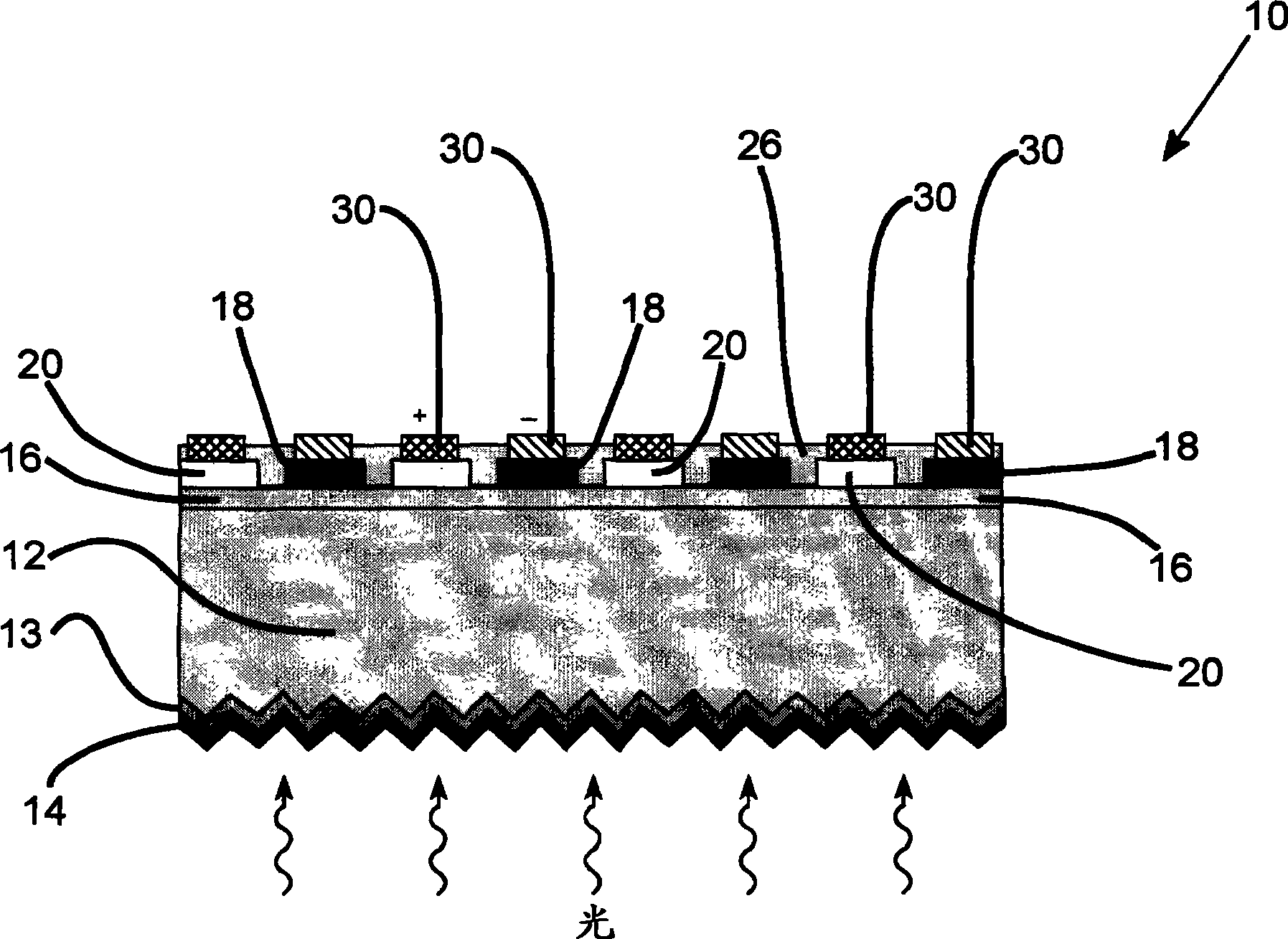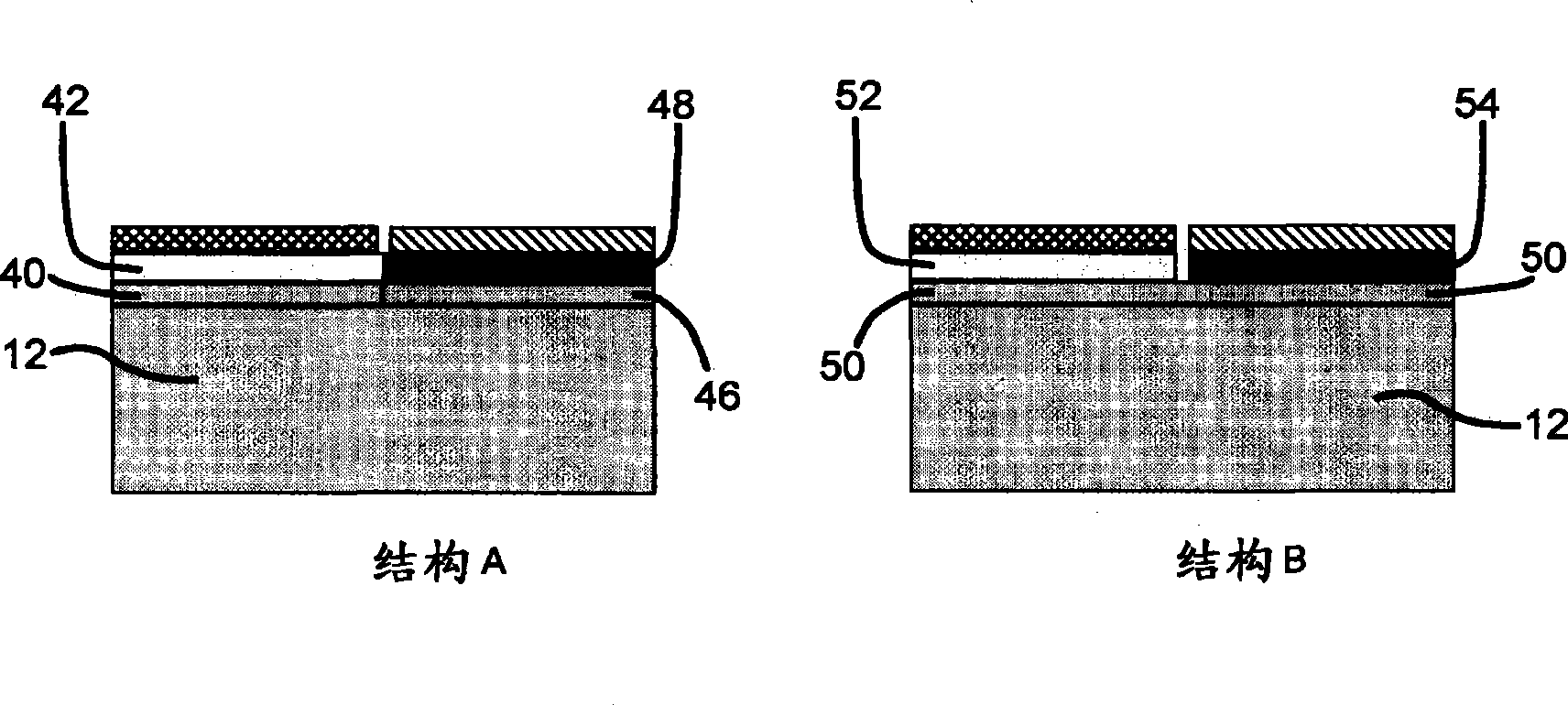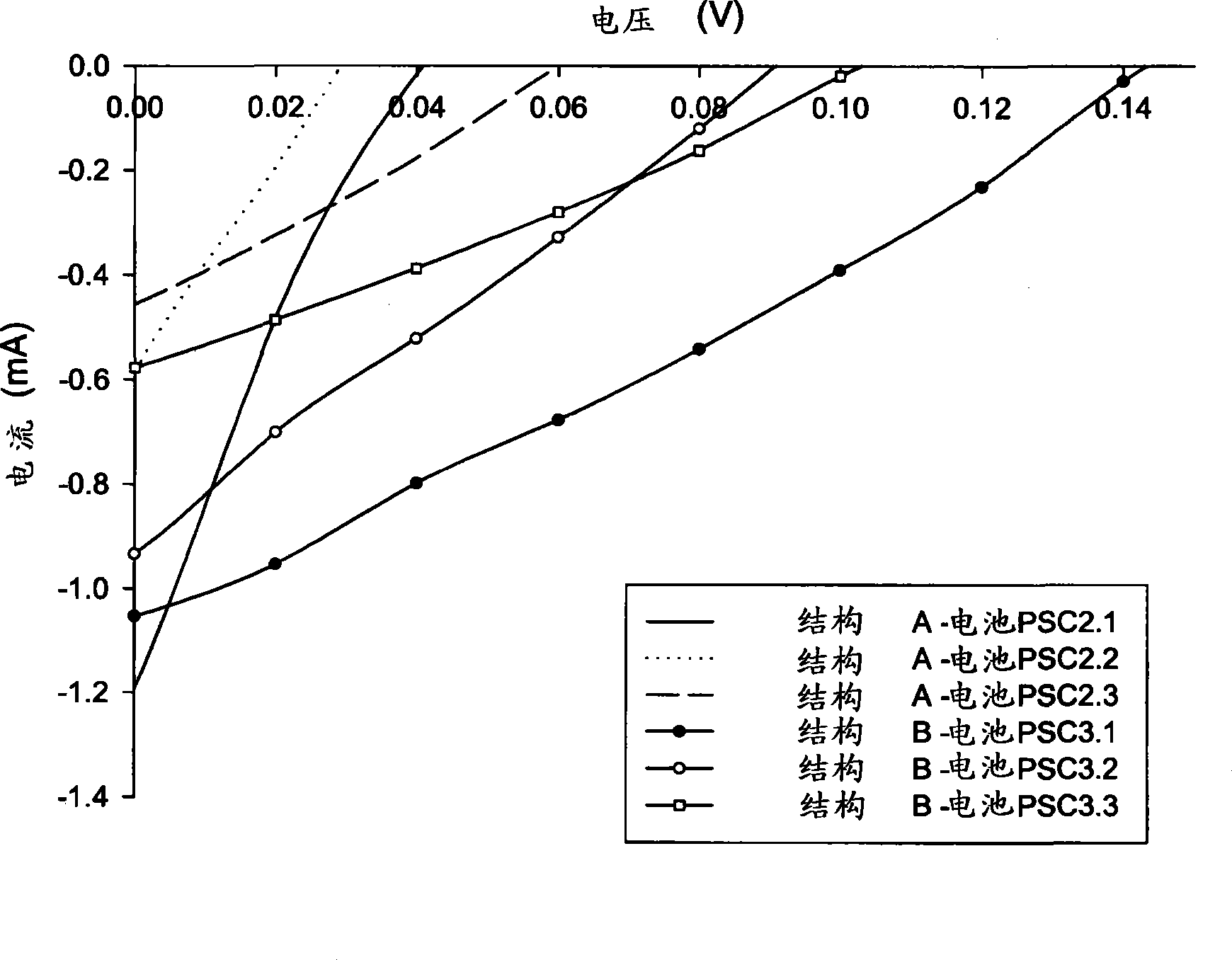Solar cell
A technology of solar cells and hydrogenated amorphous silicon, which can be used in circuits, photovoltaic power generation, electrical components, etc., and can solve the problem of not being able to increase the size.
- Summary
- Abstract
- Description
- Claims
- Application Information
AI Technical Summary
Problems solved by technology
Method used
Image
Examples
Embodiment Construction
[0020] The systems described herein generally relate to solar cell implementations. Although embodiments of the invention are disclosed herein, the disclosed embodiments are exemplary only, and it should be understood that the invention is capable of many alternative forms. Furthermore, the figures are not to scale and some features may be exaggerated or minimized to show details of particular features, while related elements may be omitted to avoid obscuring novel aspects. Therefore, specific structural and functional details disclosed herein are not to be interpreted as limiting, but merely as a basis for the claims and as a representative basis for enabling one skilled in the art to variously employ the present invention. For purposes of instruction and not limitation, the illustrated embodiments relate to solar cell embodiments.
[0021] As used herein, the term "about" when referring to a range of dimensions such as layer thicknesses or other physical properties or chara...
PUM
| Property | Measurement | Unit |
|---|---|---|
| thickness | aaaaa | aaaaa |
| thickness | aaaaa | aaaaa |
Abstract
Description
Claims
Application Information
 Login to View More
Login to View More - R&D
- Intellectual Property
- Life Sciences
- Materials
- Tech Scout
- Unparalleled Data Quality
- Higher Quality Content
- 60% Fewer Hallucinations
Browse by: Latest US Patents, China's latest patents, Technical Efficacy Thesaurus, Application Domain, Technology Topic, Popular Technical Reports.
© 2025 PatSnap. All rights reserved.Legal|Privacy policy|Modern Slavery Act Transparency Statement|Sitemap|About US| Contact US: help@patsnap.com



